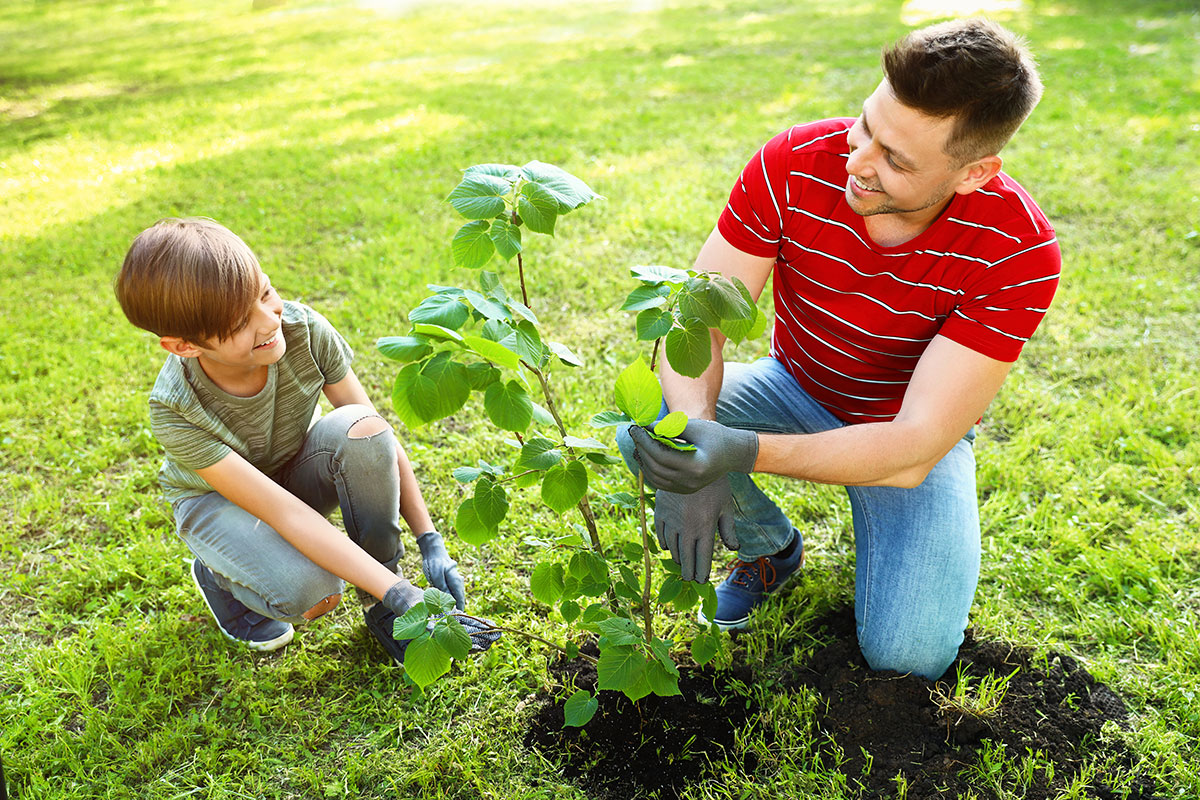Trees have many benefits in landscaping. On top of being beautiful, they add presence and height to any setting. Whether deciduous or coniferous, whether they bloom or produce fruits (or not!), trees are precious allies not only for their undeniable ornament quality, but also and especially for their many environmental benefits. Indeed, trees filter atmospheric pollutants, lower the ambient temperature, create shade, provide shelter and food for insects and animals, trap CO2 and produce oxygen in return, and so much more. Without trees, especially in urban areas, air quality would be greatly affected. Planting a tree is a very noble gesture that will bring you many benefits. To make sure your tree has an optimal growth, there are a few rules to follow.
When to Plant
We can plant trees at almost any moment, but to maximize your chances of success and to minimize stress to the trees, do it in Spring when the ground has thawed, or in Fall before the frost. Fall is a good time to plant trees because the soil is still warm, and water is available for the roots.
How to plant
Before planting your tree, choose its location wisely: trees live a long time and can sometimes become quite large. Make sure the roots won’t be a problem for your flooring or that the branches will not damage your roof or the siding of your house once your tree has grown.
Also, take the time to choose the right tree species for your situation and needs. Consult with a nursery specialist to guide your decision.
When it comes times to plant:
- Make a hole 2 to 3 times as wide as the root ball of your tree and of equal depth. The collar – the junction between the trunk and the roots – should not be buried; place it at ground level or slightly above.
- Position your tree upright at the center of the hole and fill with good quality soil. You can also use the existing soil, if it’s of good quality. To encourage rooting, add mycorrhizae or a rooting fertilizer to the soil. Avoid compacting the soil too much.
- Provide a watering hole all around your tree. To do so, make a bead of soil all around the hole you just filled.
- While taking care to leave 5 cm free around the trunk, add a good layer of mulch (10 to 15 cm) around your tree to preserve moisture and limit weed growth.
- The soil should be kept moist: water thoroughly immediately after planting, and as needed after. Let the hose run gently at the base of your tree for a good half an hour to encourage deep rooting.
To stake or not to stake?
Stakes are not necessary unless your tree is subject to high winds. If you do install a stake, remember that it must be removed in a year.
By following these few steps, you will have beautiful, healthy trees that will make you happy for many years. If you do not want to plant trees yourself, we do offer a planting service. Find out more about this service!






